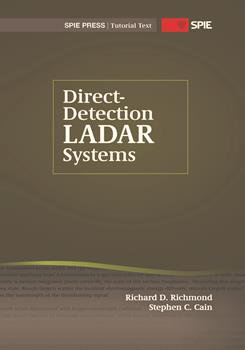|
This chapter discusses the fundamental laws governing the propagation of optical fields and uses them to help account for the spatial effects that occur as a laser beam propagates to a target and back to a LADAR receiver. Accounting for these spatial effects will improve the fidelity of the LADAR models introduced in Chapters 1 and 2. For example, in Chapter 1 a uniform illuminating beam was assumed for the development of the range equation. This assumption can be removed by using methods that account for the nonuniformity of the beam to simulate more realistic waveform data. Spatial effects present in a LADAR system model will be accounted for by expanding upon the waveform model introduced in Chapter 2. Instead of modeling the return from the target as a single waveform, we will model the return as a collection of waveforms at different spatial coordinates in the focal plane of the LADAR receiver. This model will assume that although the illumination is nonuniform spatially, it can be approximated as being uniform over a small spatial extent consistent with the size of the samples in our spatial model. Thus, the single-waveform architecture introduced in Chapter 2 will be replaced with a 3D waveform model. This new model operates on the principle that each spatial location obeys the waveform model introduced in Chapter 2. The detector within the LADAR receiver will be modeled as a single element that will integrate the spatially diverse waveforms present in the focal plane of the receiver optics. The 3D waveform architecture is not completely necessary in cases where the LADAR receiver has a single detector, but it will facilitate the introduction of true 3D LADAR models in Chapter 5. The sources for all of the spatial effects introduced in this chapter can be described by two distinct phenomena. The first arises from the fact that the illumination exiting the cavity of a laser transmitter is not spatially uniform. This nonuniformity will be covered in Sec. 3.1. The second is due to diffraction. Diffraction is the process by which light deviates from its geometrically predicted behavior. Geometric raytracing serves as a first-order model to predict where beams of light will propagate. If light is treated strictly as a particle, geometric raytracing would adequately describe how light moves from one location to another. |
|
|


